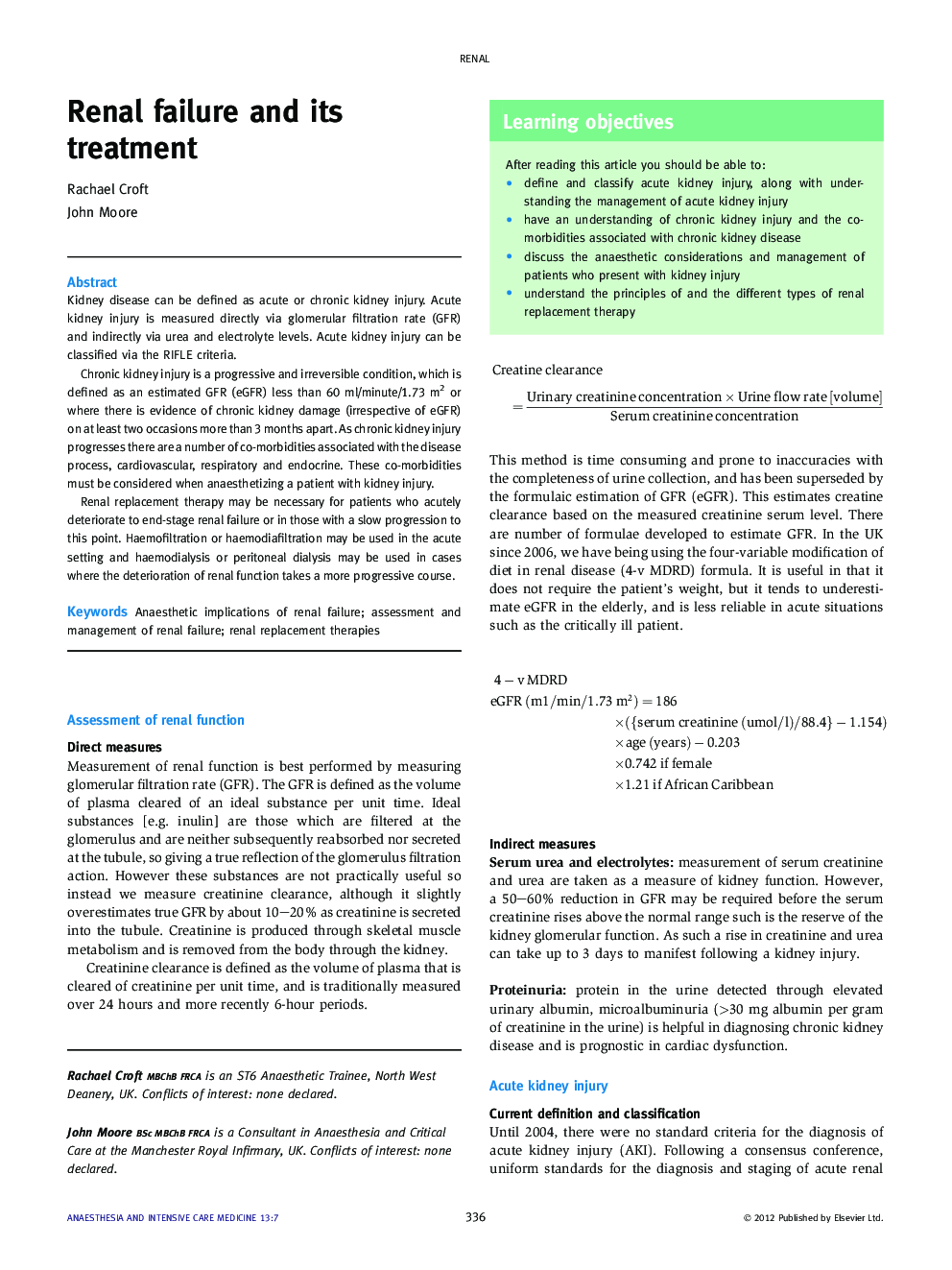| Article ID | Journal | Published Year | Pages | File Type |
|---|---|---|---|---|
| 2743022 | Anaesthesia & Intensive Care Medicine | 2012 | 7 Pages |
Kidney disease can be defined as acute or chronic kidney injury. Acute kidney injury is measured directly via glomerular filtration rate (GFR) and indirectly via urea and electrolyte levels. Acute kidney injury can be classified via the RIFLE criteria.Chronic kidney injury is a progressive and irreversible condition, which is defined as an estimated GFR (eGFR) less than 60 ml/minute/1.73 m2 or where there is evidence of chronic kidney damage (irrespective of eGFR) on at least two occasions more than 3 months apart. As chronic kidney injury progresses there are a number of co-morbidities associated with the disease process, cardiovascular, respiratory and endocrine. These co-morbidities must be considered when anaesthetizing a patient with kidney injury.Renal replacement therapy may be necessary for patients who acutely deteriorate to end-stage renal failure or in those with a slow progression to this point. Haemofiltration or haemodiafiltration may be used in the acute setting and haemodialysis or peritoneal dialysis may be used in cases where the deterioration of renal function takes a more progressive course.
